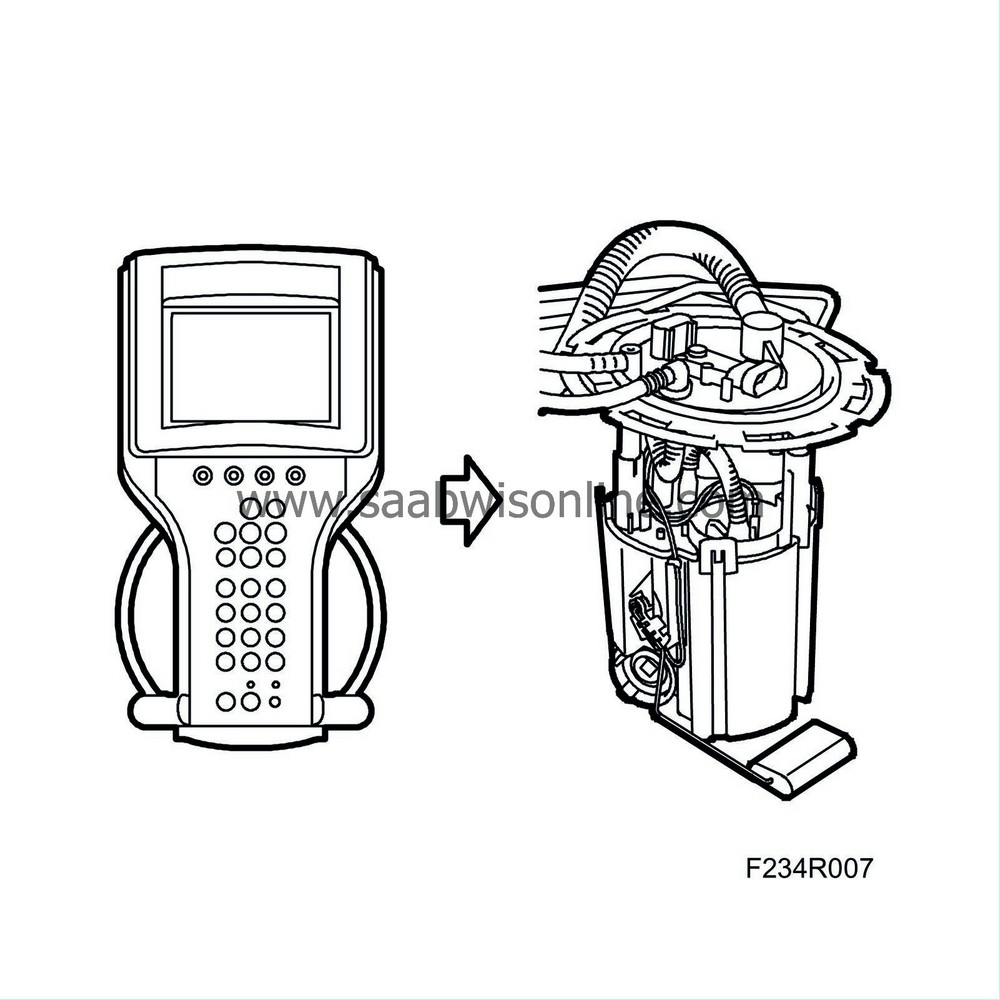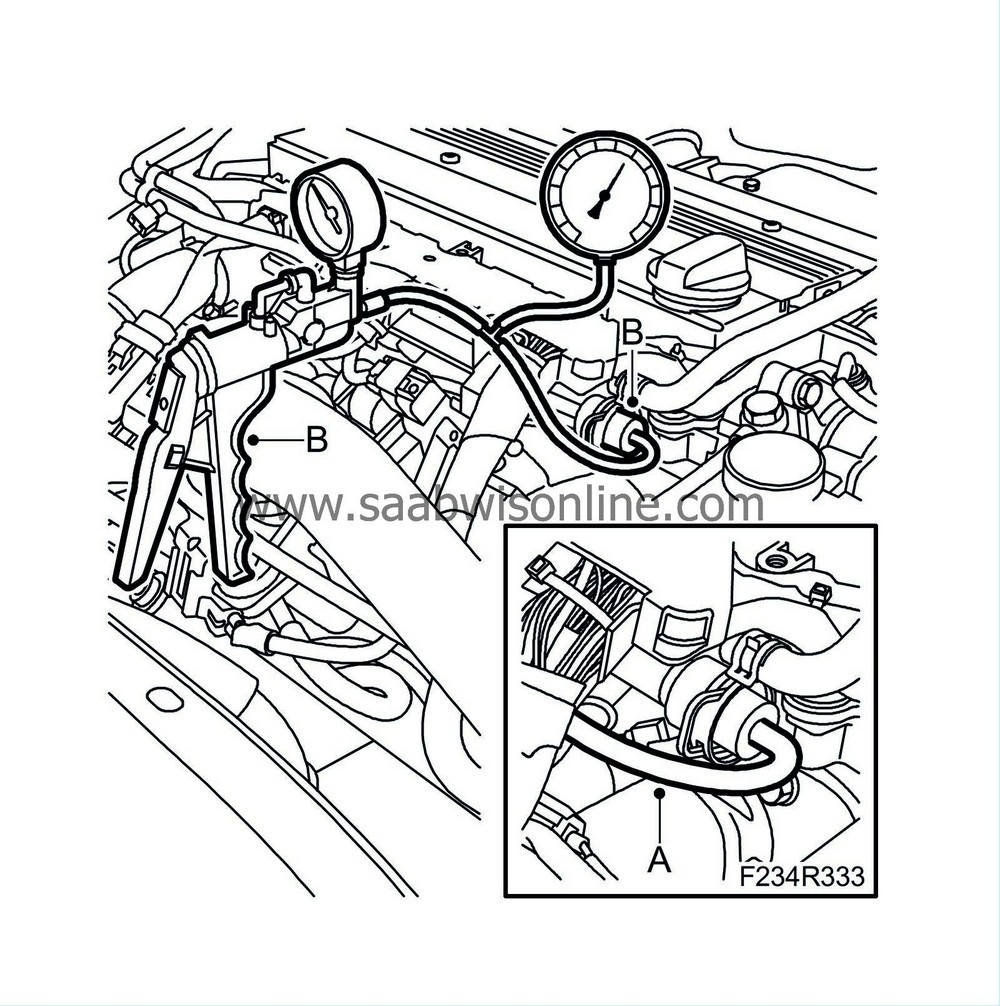Checking the fuel pressure regulator
|
|
Checking the fuel pressure regulator
|
 Warning
Warning
|
|
Removal of the fuel pressure regulator is a procedure involving the car's fuel system. It is therefore necessary to observe the following precautions in conjunction with the procedure:
|
|
•
|
Ensure good ventilation! If there is approved ventilation for extraction of fuel fumes then this must be used.
|
|
•
|
Wear protective gloves! Prolonged exposure of the hands to fuel can cause irritation of the skin.
|
|
•
|
Have a fire extinguisher class BE at hand! Be aware of the risk for sparks, i.e. in connection with circuit breaking, short-circuiting, etc.
|
|
•
|
Absolutely no smoking!
|
|
•
|
Use protective goggles.
|
|
|
|
|
|
|
3.
|
Start the fuel pump using the diagnostics tool.

|
|
4.
|
Check the reading at atmospheric pressure. The reading should be 3 bar (43 psi).
|
|
5.
|
Increase the vacuum in the pressure regulator by means of the pressure/vacuum pump. System pressure should drop by the same amount as indicated on the pressure gauge.
|
System pressure
|
bar (psi)
|
3.0 (43)
|
|
|
6.
|
Pump up the pressure in the pressure regulator with the vacuum pump. The system pressure should now increase with the same amount as the reading on the pressure gauge.
|
|
7.
|
Switch off the fuel pump using the diagnostics tool.
|
|
8.
|
"Safety on" the adapter and remove the pressure measuring equipment from the service nipple. Collect any fuel spill with a rag.
|
|
9.
|
Remove the gauges and adapters; reconnect the hose to the fuel pressure regulator.
|




 Warning
Warning

